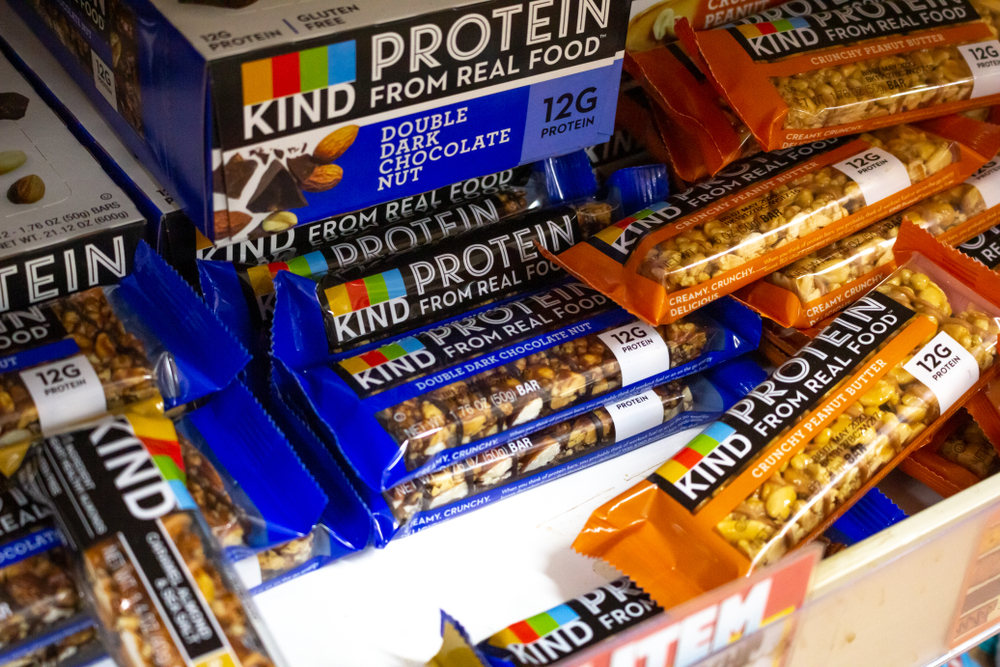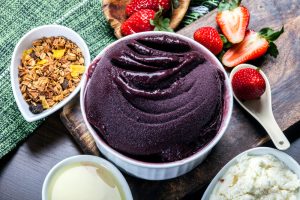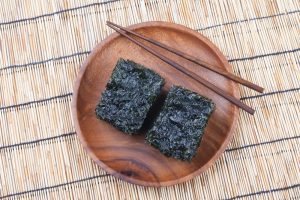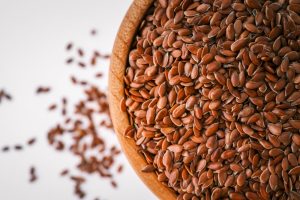Kind bars can support weight loss if you choose the right ones and factor them into your overall calorie intake.
They aren’t weight-loss foods by default, but they can help manage hunger when used strategically—keep reading to see how.
What’s Inside a Kind Bar? A Look at Nutrition and Satiety
Kind bars are marketed as wholesome snacks, but what’s actually inside determines whether they fit into a weight-loss plan.
Understanding their nutritional profile is the first step to deciding if they’re helping or hurting your progress.
At their core, most Kind bars are moderately caloric.
Each one typically contains between 150 and 200 calories—enough to curb hunger, but not so much that it derails your day, if you account for it.
This range makes them workable as a snack in most calorie-controlled diets, especially when you’re trying to avoid more indulgent options like pastries or candy bars that often pack in more sugar and fewer nutrients.
Where Kind bars really stand out is in their fiber and protein content.
Many varieties offer around 5 to 7 grams of fiber and 6 to 12 grams of protein per bar.
These are the nutrients that help keep you full.
Higher-protein options like the Protein Max line can even reach up to 20 grams of protein—closer to what you'd expect in a small meal or a recovery shake.
That added protein can make a real difference if you're using the bar to bridge long gaps between meals.
The fiber also plays a critical role. It slows digestion and steadies blood sugar, which can help prevent the kind of energy dips that lead to impulsive snacking.
Together, fiber and protein make Kind bars more satisfying than ultra-processed, low-nutrient snacks that tend to leave you hungry again an hour later.
Another strength is the ingredient list.
Kind bars are primarily made with whole foods—things like almonds, peanuts, oats, and dried fruit.
That means they’re often more filling per calorie than snacks filled with refined starches or sugary fillers.
When you're trying to manage your appetite without feeling deprived, that kind of ingredient quality matters.
In short, the combination of moderate calories, solid protein and fiber content, and whole-food ingredients makes Kind bars a viable option for managing hunger in a weight-loss diet.
The key is reading the label closely—some bars are far better than others when it comes to nutritional value, and knowing what to look for gives you control over how well they work for your goals.
Can Kind Bars Actually Support Weight Loss?
It's one thing for a snack to be convenient, but when you're trying to lose weight, the real question is whether it helps you eat less overall—not just differently.
Kind bars, depending on how and when you use them, can play a supportive role in weight control. Here's how.
First, their relatively high fiber and protein content gives them a strong advantage over empty-calorie snacks.
Fiber slows digestion, while protein increases satiety—both of which help curb your appetite.
If you often find yourself hungry between meals, having a filling snack like a Kind bar could keep you from reaching for something less intentional later.
This kind of hunger control is often what makes or breaks a weight-loss effort.
There’s also some emerging research that suggests they may be more than just a neutral snack.
In a small pilot study, participants added two Kind Fruit & Nut bars to their diets daily. Interestingly, they didn’t gain weight—even with the extra calories.
In fact, some people actually lost weight, likely because the bars replaced less nutritious foods or helped regulate appetite throughout the day.
While it's a limited study and not conclusive on its own, it hints that snacks like these—when chosen and timed well—can help stabilize eating patterns.
That brings up a key point: when you eat a snack matters.
Using a Kind bar mid-morning or in the afternoon, especially if those are times you’re most prone to cravings or energy crashes, can help you avoid overeating during your next meal.
Instead of arriving at lunch starving and likely to overdo it, you’re more in control.
And when that snack is made of real, satiating ingredients instead of sugar and starch?
That effect is even stronger.
Still, it's not the bar alone that leads to weight loss.
It's what it replaces, what it prevents, and how it fits into your total intake.
Used as a strategic, portion-controlled snack—not as a mindless add-on—Kind bars can absolutely support your weight-loss plan.
The Hidden Pitfalls: When Kind Bars Might Work Against You
Even snacks with solid nutritional reputations can cause setbacks when used carelessly—and Kind bars are no exception.
While they have clear upsides, there are also common mistakes that can make them less helpful, or even counterproductive, in a weight-loss context.
One of the biggest concerns is added sugar.
Depending on the variety, a single bar can contain anywhere from 6 to 12 grams of sugar. For some people, that much sugar in a small snack—especially without accompanying fat or protein in the right balance—can spike blood sugar levels.
That’s not just a metabolic issue; it can also lead to rebound hunger, making you feel like you need to eat again sooner than you otherwise would have.
Then there’s calorie density.
While 150 to 200 calories per bar is moderate on paper, the problem shows up when people eat Kind bars in addition to their usual meals, rather than as a planned part of the day.
Snacking on them mindlessly, or treating them like free passes because they seem “healthy,” can quietly add hundreds of untracked calories over the week.
When you’re aiming for a calorie deficit, this kind of habit can stall or even reverse your progress without you realizing it.
Another thing to watch for is the variety you’re choosing.
Not all Kind bars are built the same. Some are low in fiber and protein—two nutrients that help with hunger management—and high in saturated fats, especially those that use palm kernel oil.
These versions won’t keep you full for long, and their fat content adds calories quickly without delivering the same benefits as protein or fiber.
It’s also worth pointing out that marketing can be misleading.
Just because the front of the package says “whole ingredients” or “non-GMO” doesn’t mean the bar is a smart choice for weight loss.
Always check the nutrition label. You’ll want to confirm not only calories and sugar but also protein, fiber, and fat sources.
How to Choose the Right Kind Bar for Your Goals
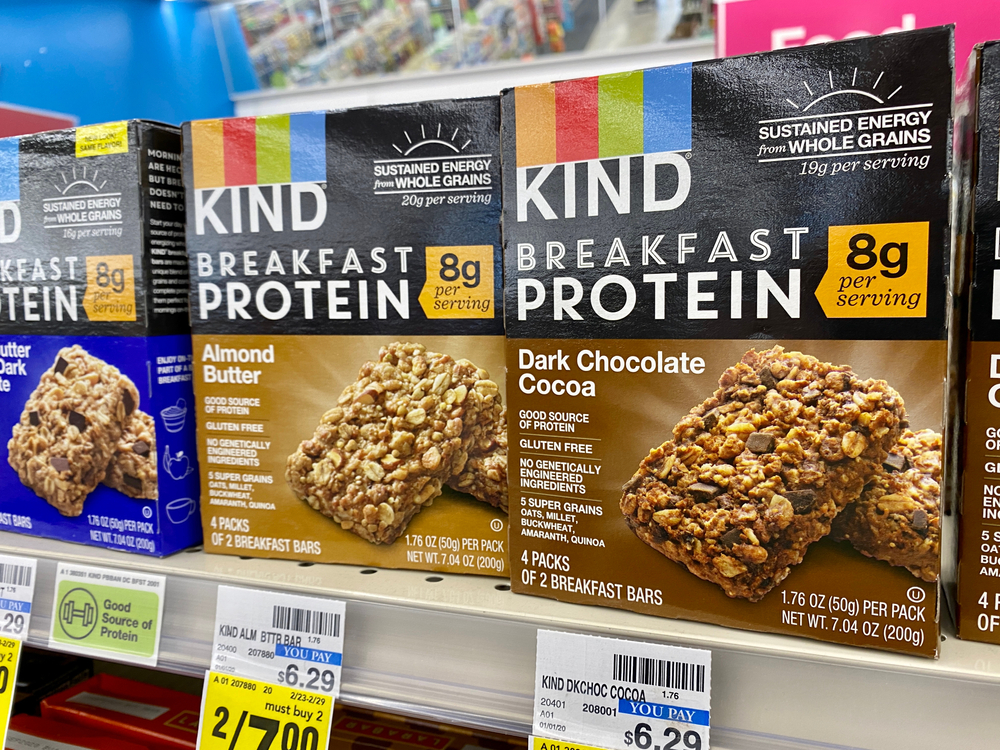
Not all Kind bars are equally helpful when it comes to weight management.
Some support satiety and portion control, while others are closer to candy bars in disguise.
Knowing what to look for can help you get the benefits without the unnecessary sugar or calories.
Start with fiber and protein. As a rule of thumb, look for bars that have at least 5 grams of fiber and 6 grams of protein.
These two nutrients work together to slow digestion and keep you feeling full longer.
Without them, the bar is likely to give you a quick energy bump but leave you hungry again soon after.
Added sugar is the next thing to check.
Some bars contain up to 12 grams, which can easily undercut your efforts if you’re trying to reduce total sugar intake or keep blood sugar levels stable.
Try to choose bars with less than 6 grams of added sugar—this keeps the calorie count lower and helps avoid the kind of insulin spikes that can make weight control harder.
A few specific varieties stand out as better picks:
- Dark Chocolate Nuts & Sea Salt – Offers a good balance of protein and fiber with lower sugar than many others.
- Protein Max series – These go beyond the standard lineup with up to 20 grams of protein, making them especially useful after workouts or as more filling snacks.
- ZEROg Added Sugar line – Designed specifically to keep sugar out of the equation, these are solid options if you’re trying to keep total intake tightly controlled.
If a bar is low in both fiber and protein—or high in sugar—it’s best to skip it, especially if your goal is weight loss.
These options might still be tasty, but they won’t do much to support hunger management and could quietly push your calorie intake higher than intended.
How and When to Eat Kind Bars to Support Weight Loss
Choosing the right Kind bar is only part of the equation—how and when you eat it matters just as much.
Strategic timing and smart pairings can turn this convenient snack into a helpful tool for appetite control and calorie management.
The best time to eat a Kind bar is typically between meals, when you’re starting to feel hungry but it’s not quite time to eat again.
A mid-morning or mid-afternoon snack can stabilize your energy and prevent that ravenous feeling that leads to overeating at your next meal.
For example, having one around 3 p.m. can help you stay in control until dinner, especially if your lunch was light or your schedule is unpredictable.
That said, Kind bars are not calorie-free passes.
Even the better options contain 150 to 200 calories, which can add up quickly if you're not paying attention.
Track them like any other food—whether you're using a food journal, an app, or just mental math.
Treating them as “healthy extras” rather than part of your daily intake is one of the easiest ways to unintentionally exceed your calorie budget.
Another effective strategy is to combine a Kind bar with other whole foods when you need a more complete snack.
For instance, pairing one with a hard-boiled egg or a piece of fruit can help you feel full longer than eating the bar alone.
This works particularly well if the bar is lower in protein or fiber than you'd like, or if you're recovering from a workout and need something more substantial.
Just as important is knowing what a Kind bar isn't. It’s not meant to replace meals.
Relying on them as a substitute for breakfast or lunch often backfires—they simply don’t provide enough volume or nutrients to fuel you for long.
Instead, think of them as gap-fillers, useful for managing hunger between more balanced meals.
Used in this way—with timing, awareness, and purpose—Kind bars can support your efforts rather than working against them.
It’s not just what you eat, but how you work it into the bigger picture that makes the real difference.
Final Thoughts: Are Kind Bars a Good Fit for Your Weight Loss Plan?
Kind bars sit in a unique middle ground—they're not magic diet foods, but they're also far from junk.
Whether they help or hinder your progress depends entirely on how you use them in your day-to-day routine.
Yes, they can support weight loss—when they’re used with purpose.
A well-chosen Kind bar, eaten at the right time, can curb hunger, reduce mindless snacking, and help you stick to your eating plan.
The fiber and protein in many of these bars promote satiety, which often leads to better portion control throughout the day.
In this sense, they act as tools to manage appetite, not as calorie-saving tricks.
But no, they won’t do you any favors if you’re simply adding them on top of your regular meals without adjusting your overall intake.
That’s where they become a problem.
Like any food, they contain calories that count—regardless of how healthy the ingredients may be.
If your goal is weight loss, those calories need to fit within your daily target.
The key takeaway is this: Kind bars can play a helpful role in a weight-loss strategy, but they are not a strategy on their own.
Think of them as convenient pieces of a larger puzzle—something you use to fill a specific need, not a blanket solution for managing your diet.
To make them work for you:
- Always read the nutrition label—don’t assume all flavors are equal.
- Choose bars with enough protein and fiber to keep you full.
- Be mindful of added sugars and avoid options that spike your intake.
- Track them in your calorie total just like you would any other food.
- Use them to manage hunger between meals, not as replacements or unplanned extras.
When you approach them this way, Kind bars can absolutely be part of a balanced, sustainable weight-loss plan—one that prioritizes consistency, awareness, and real nourishment over shortcuts.

